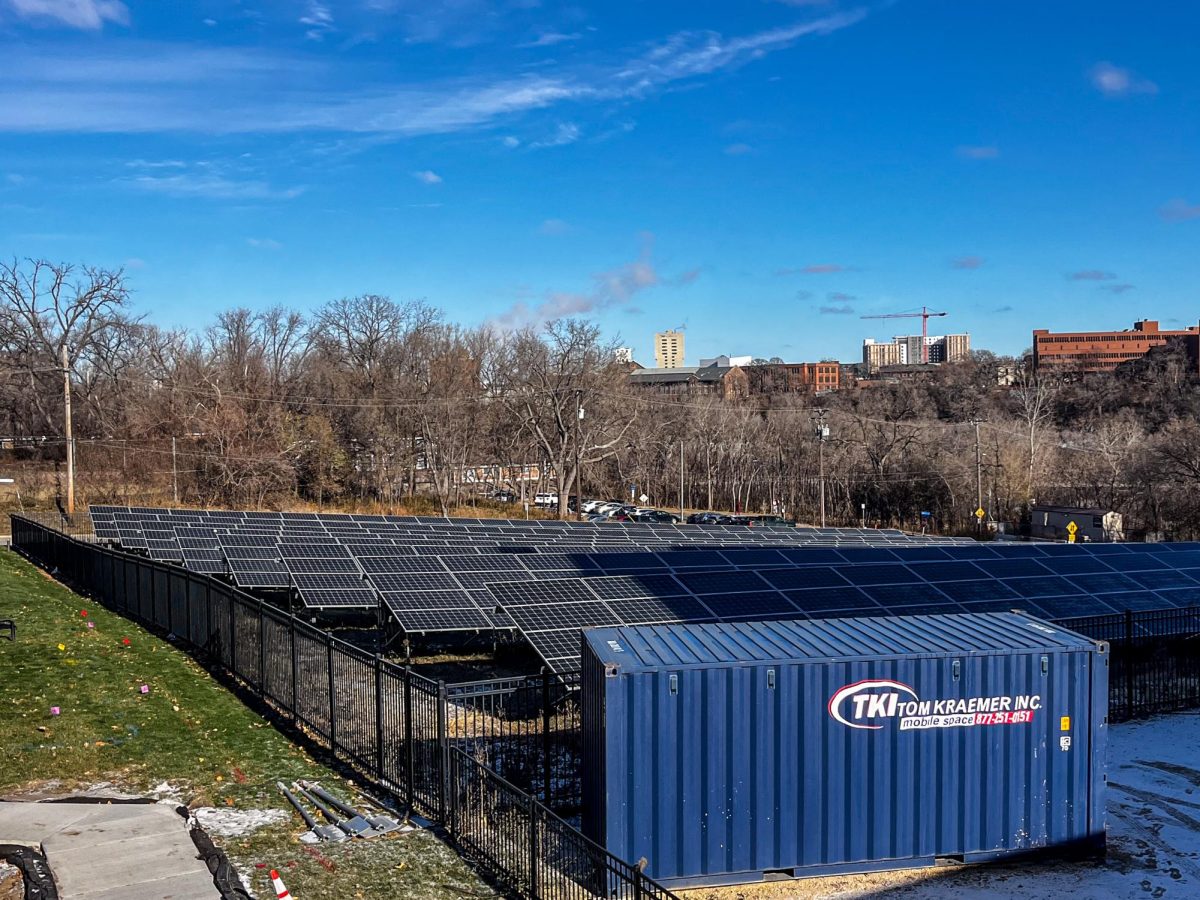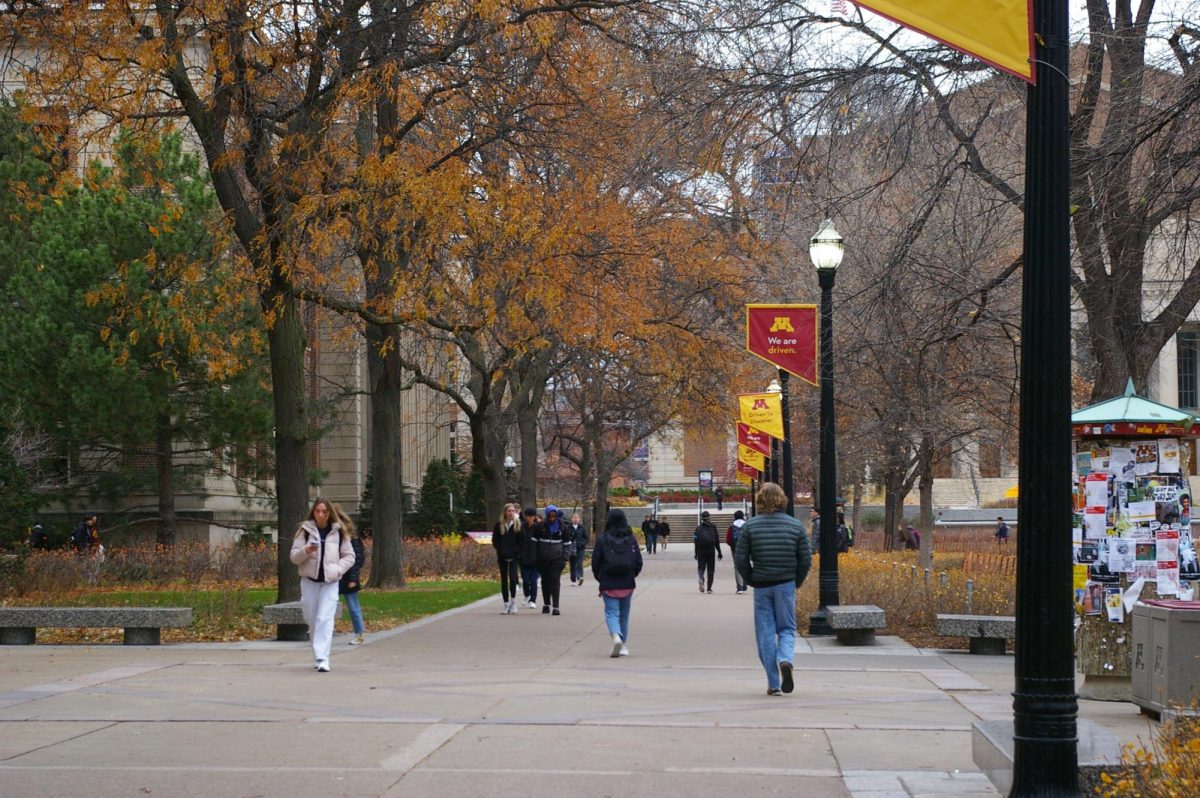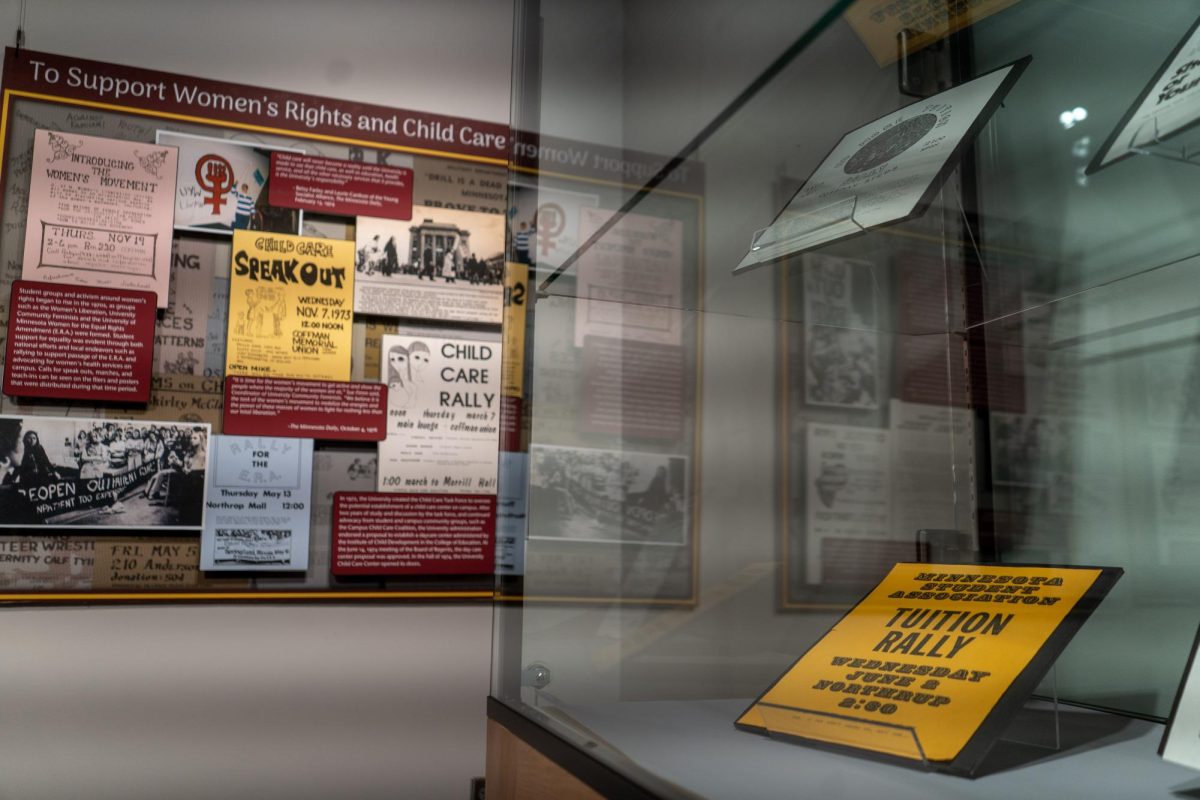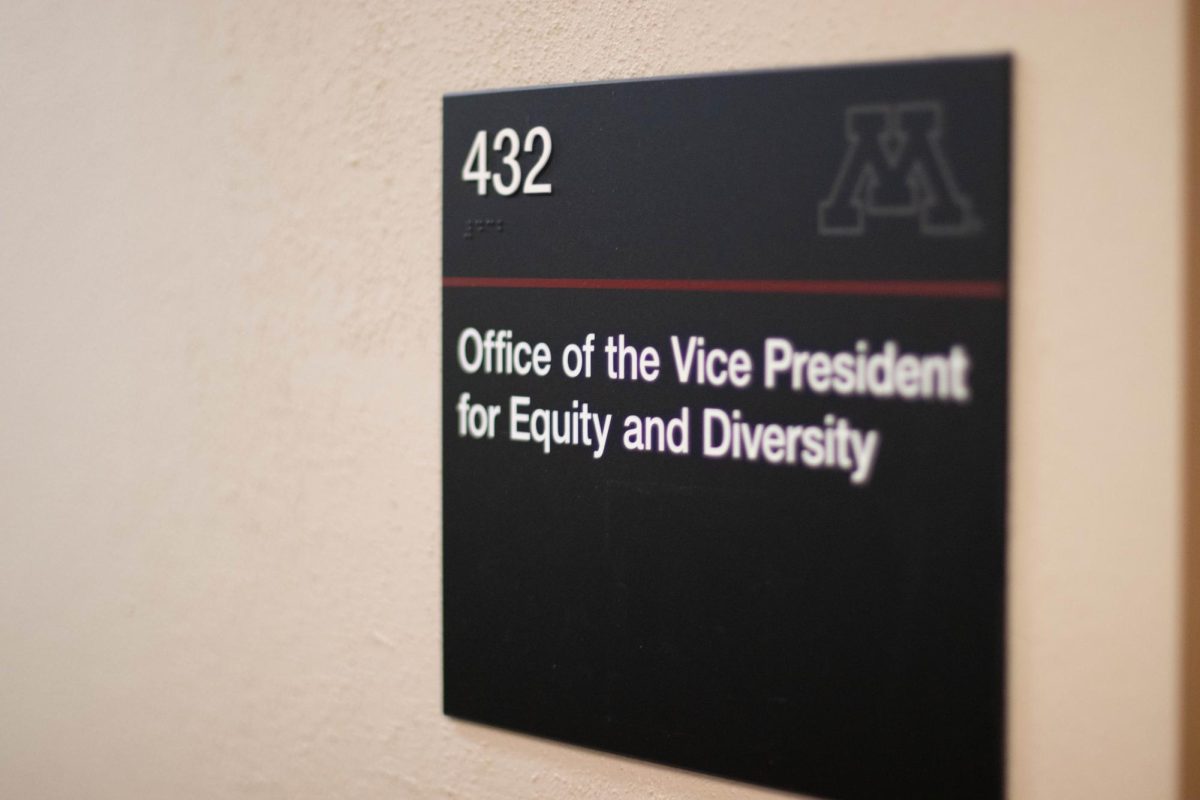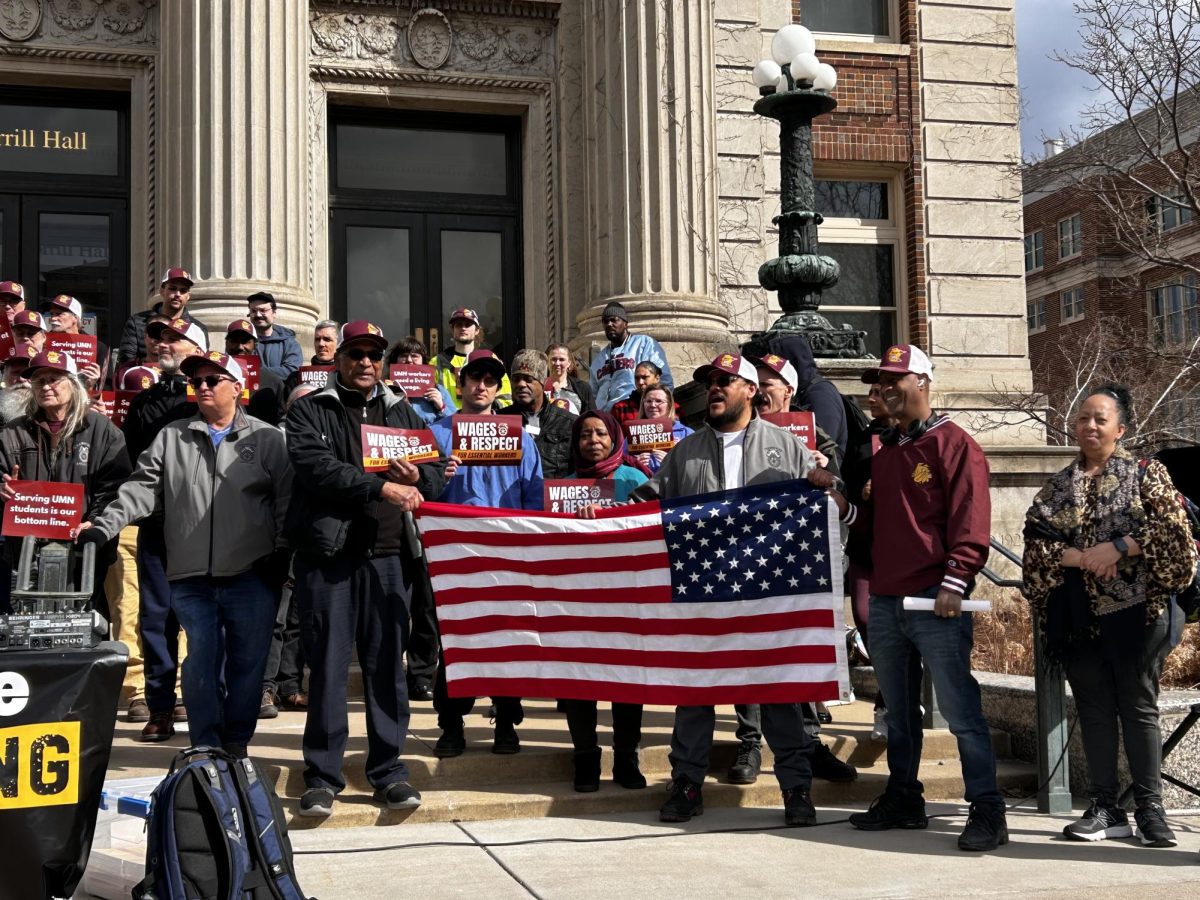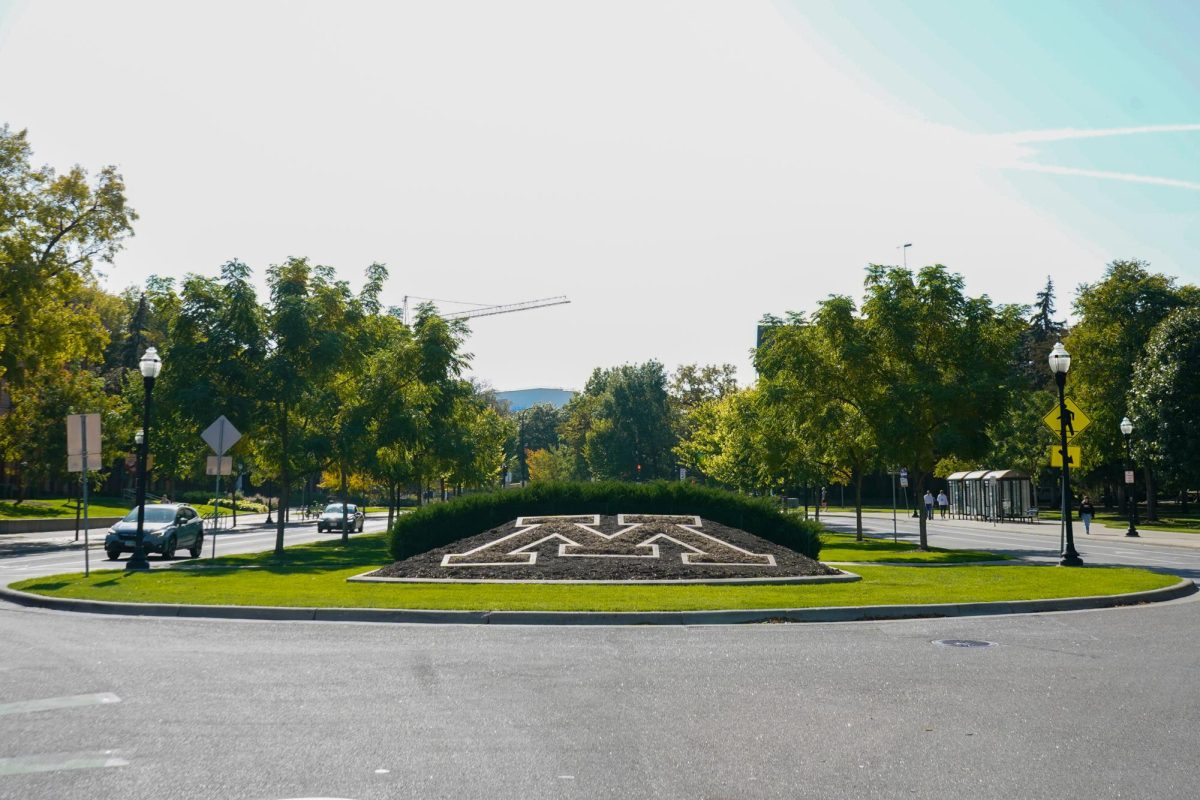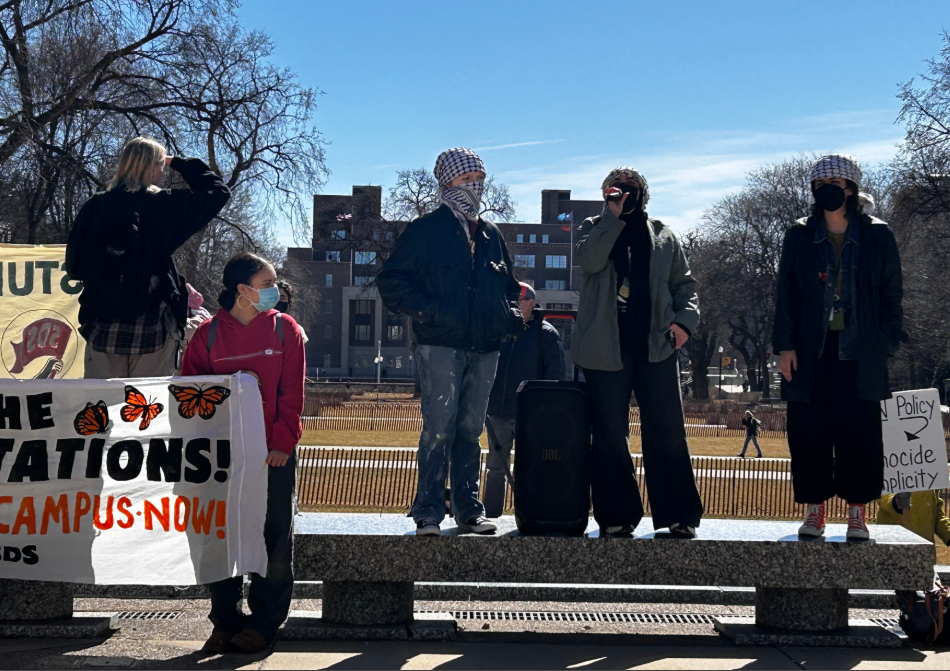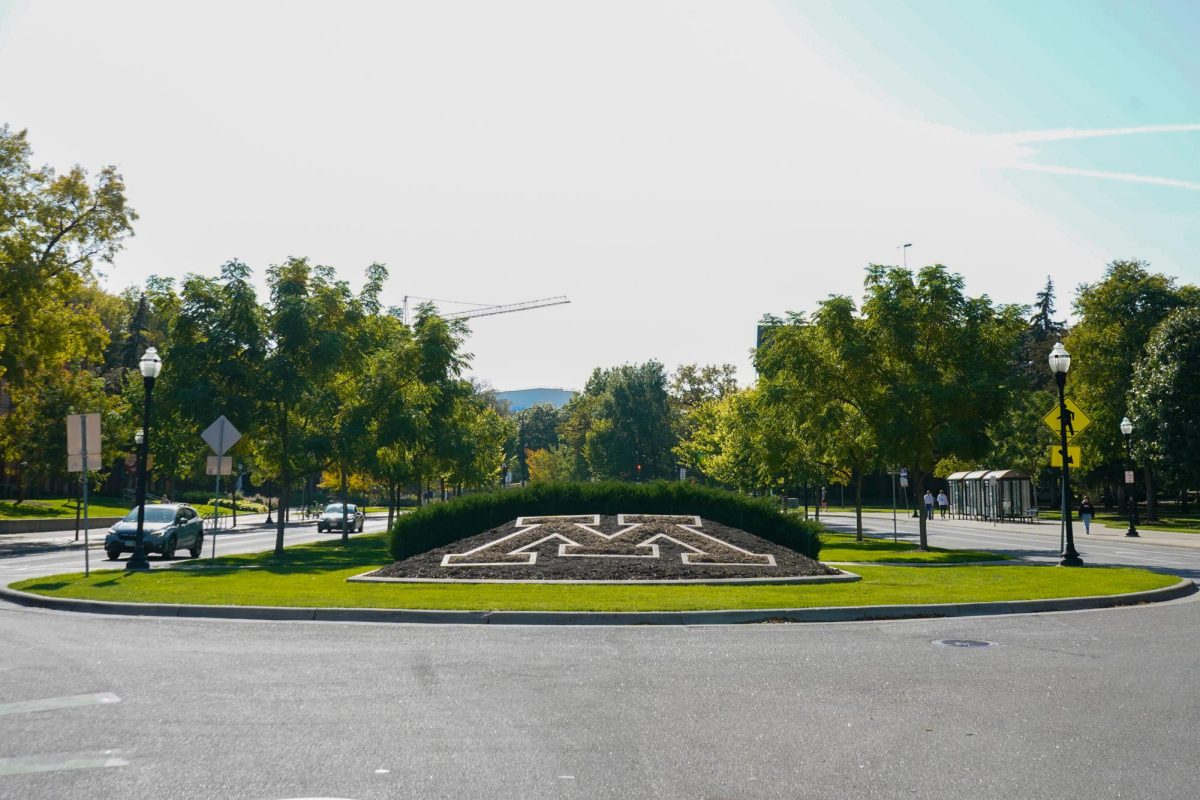The University of Minnesota has been outlining its climate strategies for over two decades. Now the strategy is preliminary research and planning, with continued action on select items.
This is a brief summary of some of the confirmed actions and objectives either being conducted or considered by the University, according to the Climate Action Plan and Climate Resilience Plan.
Current actions:
- A variety of energy-efficient modifications in campus buildings, including finishing retrofitting LED lights
- University vehicle monitoring program to save energy and gas
- Optimizing building space, such as consolidating or reorganizing
Current considerations and future projects:
- Exploring potential solar panel locations
- HVAC (Ventilation) overhauls
- Setting tree canopy resilience objectives
- Determining energy efficiency finance considerations and policy
- Potentially decommissioning buildings
- EV charging stations and prioritization
- Incentivize lower carbon travel options in Study Abroad
Available information was pulled from the Office of Sustainability Climate Action Plan progress or confirmed by Office of Sustainability personnel. The climate action plan progress page will be updated in January 2025.
The 2023 Climate Action Plan identifies actions to eliminate emissions. The Climate Resilience Plan, the second part of the Climate Action Plan, was released to further expand existing strategies to the University community, infrastructure and environment.
Office of Sustainability on current and future initiatives
Office of Sustainability director Kate Nelson said it is a complex, interdisciplinary process to become more energy efficient, which is why many climate objectives are being researched at this point.
“The pollen from trees clogs up our HVAC system and can actually make our buildings run less efficiently when trees are too close to a building,” Nelson said. “This is taking a lot more thought, but that’s what we’re good at.”
Nelson said the Climate Action Plan prioritizes climate resilience, focusing on assets like tree canopies and IT infrastructure. She added that ongoing projects include solar panel installations, with a goal to add four megawatts of power generation and optimize building space and energy use.
Nelson said the University Climate Action Plan aims to reduce emissions by 60% from a 2019 baseline. She added some of the key targets include 100% renewable electricity by 2033, a 20% renewable share in thermal energy and energy efficiency improvements.
The Climate Action Plan seeks to make the University carbon neutral by 2050.
According to Office of Sustainability numbers calculated in gigajoule energy units, the Twin Cities campus used four million gigajoules of nonrenewable energy and half a million gigajoules of renewable energy in 2023. About 13% of energy on the Twin Cities campus comes from renewable sources, compared to systemwide renewable energy levels of about 5%.
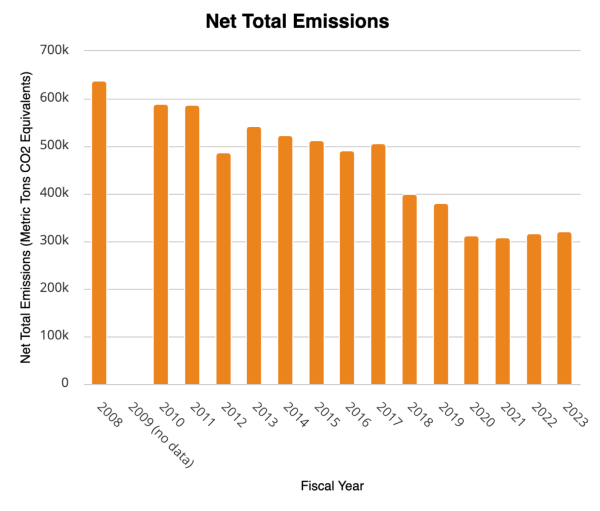
Sustainability context for climate enthusiasts
MPact 2025, the systemwide strategic plan from 2020 used to track progress on the University’s highest priority goals, specifically outlined a University commitment to a sustainable future.
This commitment was to advance the Sustainable Development Goals (SDGs) adopted in 2015 by the United Nations, a commitment that “fits seamlessly into the strategic goals and priorities of the system of every campus” according to the Office of Sustainability. The 17 SDGs include ending poverty and hunger, making renewable energy infrastructure and protecting the planet.
The Office of Sustainability was established in 2023 to oversee all University system sustainability efforts and develop future priorities, in accordance with MPact 2025.
The Office of Sustainability continues to conduct research and develop infrastructure through the Climate Resilience Plan, the University’s strategic framework to measure success and analyze the effects of the climate on the community.
Decreasing emissions over time
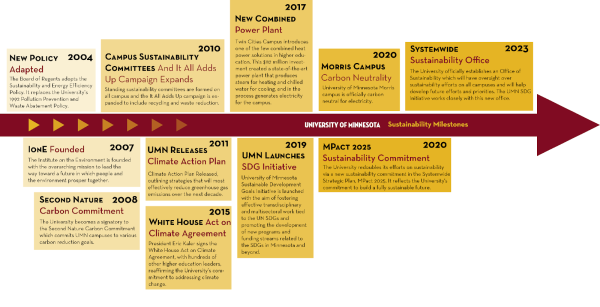
Nelson said prior to her time as Sustainability office director, the majority of emission reductions came from initial solar installations and the massive upgrade to the campus’ Main Energy Plant (MEP).
University Energy Management conserves the most
University principal energy engineering supervisor Joe Krekeler said the University sustainability effort with the best payback is energy conservation. He said the University does as much energy conservation as possible because it reduces the need for extra solar panel purchases.
Krekeler said the renewable energy goal is to get up to six megawatts in the next 10 years, primarily from solar panels. He added the University plans to reach 12 megawatts by 2045.
Utilities Operations Assistant Director Jim Kochevar said in an email to the Minnesota Daily that the intent is that the cost of renewable energy production and supply, including installation of solar on campus, is funded by Energy Management through utility rates.
“Renewable energy generated on campus does not affect the quantity of energy the building tenants use, but rather affects the rate they are charged,” Kochevar said.
Krekeler said one of the goals of the University is to save 35% of our energy use in our existing buildings in the next 10 years.
“You have to do basically anything that you can, because 35% is really hard to hit,” Krekeler said. “We are adding occupancy sensors, tuning up our building controls, adding CO2 sensors, retrofitting domestic hot water systems to use less water and doing a lot of work in laboratories.”
“You want to do as much energy conservation as you can before you start looking at installing solar panels,” Krekeler said. “We’re kind of doing them in parallel because we know we have to do both, but that’s kind of the relationship.”
Krekeler said the renewable energy goal does not include the 44% of energy purchased from Xcel Energy off campus. A third of that 44% comes from renewable energy.
Xcel, an electric utility and natural gas delivery company based out of Minneapolis, plans to fully transition to clean energy by 2050, businesswire reported. Xcel recently completed the first phase of a solar panel project expected to be completed and powering 150,000 homes in 2026.
Krekeler added that refitting HVAC systems in laboratories is essential to energy efficiency. He added that 50% of campus energy goes to labs because they require so much ventilation, heating and cooling.
“We’ll have a lot of lab projects, hopefully in the next 10 years to start reducing energies in labs too,” Krekeler said.
Krekeler said that 80% of campus buildings have been fitted with LEDS in the past ten years. According to the Office of Sustainability, LED lighting accounted for 50% of University energy savings in 2021.
Krekeler said Energy Management is currently planning out how to meet their 35% energy conservation benchmark by 10 years. He said they need to figure out how to ramp up energy conservation efforts in campus buildings, alongside current LED retrofitting taking place.
“We need to figure out how we’re going to ramp up to those numbers and how much additional staffing it’s going to take, how much additional money it’s going to take,” Krekeler said.
The on-campus solar arrays currently generate about 2.4 million kilowatts of electricity each year, according to the Office of Sustainability.
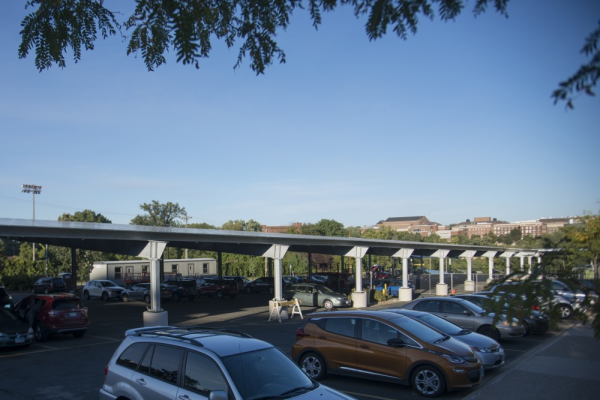
The current on-campus solar arrays currently generate about 2.4 million kilowatts of electricity each year, according to the Office of Sustainability.
Kochevar said in the email statement that solar arrays currently exist at 11 locations around the Twin Cities campus. Kochevar said multiple sites across the Twin Cities campus are being studied for potential new solar panel construction.
Kochevar said all University buildings benefit from solar panel return on investment, even the ones without panels.
What people are saying
Fourth-year student and former University Climate Action Plan intern Jennifer Fang said there is a lack of information surrounding current University sustainability progress.
“Most people just don’t know where we are at,” Fang said.
Fang said when she worked on the Climate Action Plan in 2022, the University would not be the greatest at including student perspectives. She added that she and the other intern there would sit down with Facilities and Energy Management to discuss topics such as energy supply and demand.
“They would ask, ‘Do you guys have anything you can add?’” Fang said. “Once we tried saying anything or adding anything, they were not as receptive.”
Fourth-year and environmental policy major Stephanie Bradt said she is hopeful for the University’s climate progress, though more can always be done. She added that the student body deserves to know about what is being done.
Bradt added that the University was a “mini-city within a city” and could be a symbol for bigger institutions.
“If we can show that we can make it work on the scale of the university, then the possibility of Minneapolis implementing it becomes much higher,” Bradt said. “I think that’s a really good thing.”
Students can sign up for Office of Sustainability email updates here.


